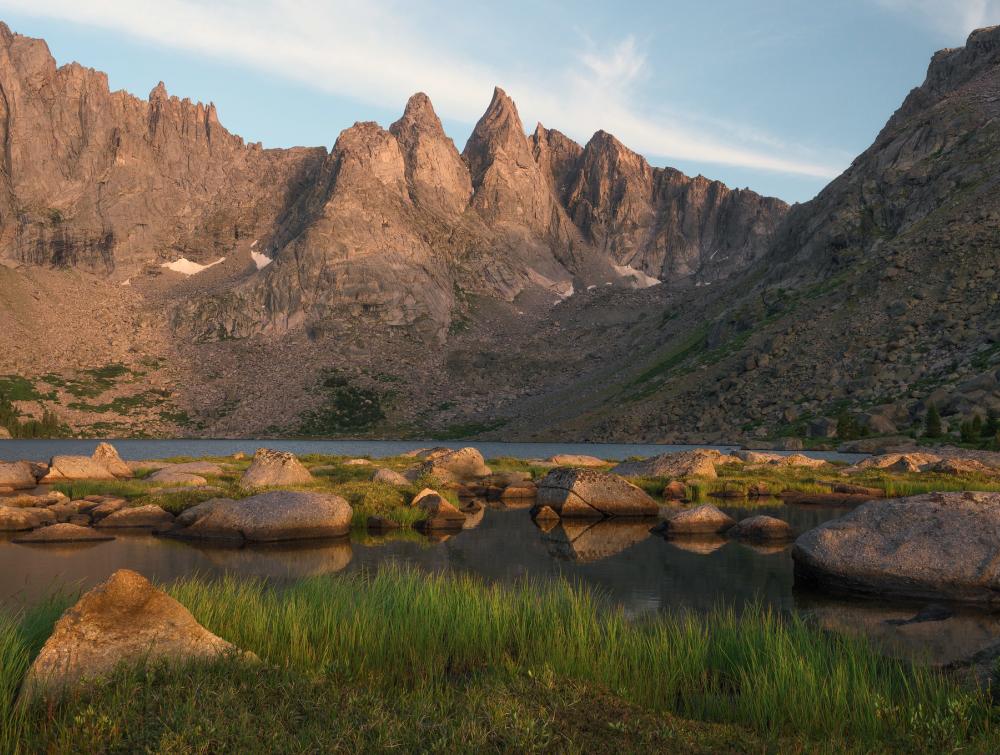These 5 wilderness areas have some of the clearest skies in America

Bridger Wilderness, Wyoming
Mason Cummings, TWS
Uniquely clean skies and clear vistas in highly protected spots
When was the last time you really could see for miles on a clear day, undisturbed by smog-like pollution? If it's been a while, you might want to visit a wilderness area.
That’s because some of those places offer uniquely clean skies and clear vistas, relatively unmarred by airborne particles from cars, coal-fired power plants and other sources.
These particles--called "haze"--reduce our capacity to see distant detail and color by absorbing or scattering sunlight, effectively clogging the air and blurring faraway sights. This is especially pronounced in regions that have lots of development and high relative humidity, as in much of the eastern U.S. That’s why, even on a crisp day, you typically won’t be able to see as far into the distance on an Appalachian hike as you would while climbing the rocky gorges of Montana’s Gates of the Mountains.
Research has found that visibility is very important to wilderness area and national park visitors--so important, in fact, that the dollar value of eliminating haze in those areas could be in the billions. Fortunately, while the U.S. as a whole has grown hazier over the last few decades, many wilderness areas retain fairly high visibility. This is partly due to a provision in 1977’s Clean Air Actthat mandates the reduction of regional haze and other airborne pollution for certain places, including wilderness areas larger than 5,000 acres (wilderness areas return the favor, acting as sources of clean air and water themselves).
According to data provided by the U.S. Forest Service and an interagency pollution monitoring network on how much a scene in these and other spots is obscured by ambient pollution, the following designated wilderness areas have some of the cleanest air and clearest skies in the country, allowing visitors to take full advantage of truly breathtaking landscapes.
Wheeler Peak Wilderness (New Mexico)
Hard against the southern end of the Sangre De Cristo mountain range, this 20,000-acre expanse of tundra and lichen-covered ridges in the Carson National Forest is home to bighorn sheep, elk, marmots, mountain lions, black bears, golden eagles and more. The mountain that lent Wheeler Peak Wilderness Area its name reaches some 13,000 feet, making it New Mexico’s highest point and a big draw for hikers and skiers. Mount Walter, pictured above, is the state's second-tallest.
Bridger Wilderness (Wyoming)
This nearly 430,000-acre wilderness area was designated under the original Wilderness Act in 1964. Named after trapper and frontiersman Jim Bridger, it contains a chunk of the Wind River Mountain Range including Gannett Peak, the tallest mountain in Wyoming. The area contains 7 of the 10 largest glaciers on earth, and its stark beauty and trout-filled deep blue lakes make it a popular destination for sportsmen.
Denali Wilderness (Alaska)
The Denali wilderness is well-known as having some of the clearest and cleanest skies in the U.S, partly owing to the lack of nearby industrial development (and, indeed, of people). At a bit more than 2 million acres, it is among the largest preserved wilderness areas in the country, accounting for about one-third of the nearly century-old Denali National Park and Preserve. The area’s signature attraction is Mount Denali, North America’s tallest peak (20,237 feet above sea level). The mountain enjoyed such prominence in Native Alaskan cultures that linguists have identified at least eight different names for it, and it is counted by some as the world’s third-tallest mountain.
Gila Wilderness (New Mexico)
Gila enjoys distinction as the world’s first designated wilderness area, set aside at the urging of Aldo Leopold in 1924. It now lies immediately to the west of the Aldo Leopold Wilderness Area, within the Gila National Forest. Gila’s geologically-diverse breadth includes dramatic stone outcroppings, canyon streams and stretches of grassland, and its wildlife inhabitants include black bears, bobcats, cougars, pronghorn antelopes and re-introduced Mexican gray wolves.
Maroon Bells-Snowmass Wilderness (Colorado)
The White River National Forest, which contains eight different designated wilderness areas under the management of the U.S. Forest Service, has among the absolute clearest skies in America (the clearest, by some measures). Maroon Bells-Snowmass Wilderness Area, which lies within White River just west of Aspen, may be one of the most-visited places in the Rocky Mountains owing to its many challenging peaks, wildflower-covered hills and spruce and fir forests. These features made it a natural choice to be among the first places in Colorado set aside for special protection under the Wilderness Act.
